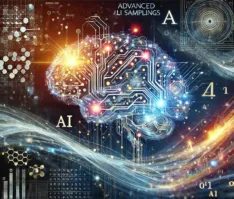Table of Contents
The term “Workforce Management” refers to the formulation and arrangement of employees in an organization with a view to maximizing efficiency and productivity. From manual processes, it has come down to modern AI-based systems. Without adapting WFM efforts toward modern technology, organizations would fail in the competition and would not be able to optimize their workforce.
Traditionally, workforce management relied on manual processes such as spreadsheets, paper schedules, and human judgment. With the evolution of technology, including AI and cloud-based solutions, these processes have become streamlined, more data-driven, automated, and efficient.
It is very important to incorporate Artificial Intelligence and other technologies into the WFM systems since the present business environment becomes more complicated and demands flexibility in the application of this system. AI provides tools for organizations with which they can predict their needs better; manage their talent; and respond to up-to-the-minute changes in demand which might boost the performance of an organization in operation, hence improved operational efficiencies.
The Role of AI in Shaping Workforce Management
- AI in Scheduling and Resource Allocation: AI-based tools use historical data, employee availability, and other factors to optimize workforce scheduling, avoiding over or understaffing and thus less manual effort.
- AI for Demand and Labor Forecasting: AI uses predictive analytics for forecasting labor needs based on patterns such as seasonal trends and sales, thereby providing optimal employee allocation and reduction in costs.
- AI in Task Management and Performance Evaluation: AI automates a lot of things including work assignment, tracking, and performance evaluation. It makes assessment become standardized and believed to save time for managers.
Benefits of Integrating AI into Workforce Management

- Improved Efficiency and Productivity: AI automates time-consuming tasks, allows employees to focus on strategic activities, and enables managers to make data-driven decisions, boosting overall productivity.
- Enhanced Employee Experience and Satisfaction: AI reduces manual tasks and offers personalized tools for employees. This enhances scheduling accuracy, work-life balance, and leads to higher satisfaction.
- Real-time Decision-Making Capabilities: AI processes data instantly, and thus management can make decisions faster, knowing that they have the right information behind them, while resources can be adjusted in real time without the need to elaborate further disruptions or inefficiencies.
Key Technologies in AI-Driven Workforce Management
- Machine Learning and Predictive Analytics: Machine learning models analyze historical data to predict staffing needs, optimize scheduling, and improve decision-making by forecasting future trends more accurately.
- Natural Language Processing (NLP) for Communication and Support: NLP enables AI systems to read and respond back in the human language and therefore will allow employees to communicate through chatbots or virtual assistants for scheduling time-off.
- AI-powered Chatbots for Employee Queries and Self-service: Most of the employees queries were handled by Chatbot completely, thereby bringing some free time to HR management without compromising the ease at getting answers.
The Future of Workforce Management in an AI-Driven World
- Future Role of AI in WFM: Increasingly AI will be at the central position and will be highly autonomic while being integrated well with all other business processes, offering more personalized operation and operational efficiency.
- Impact on Job Roles and New Opportunities: The thing is, while AI technology may replace some tasks done by human beings, a new scope for workers regarding collaboration with AI in strategic decision, creativity, and data will emerge. Thereby raising the demand for AI data science skills.
- Ethical Considerations in Human-AI Collaboration: Human-AI When AI becomes part of a workplace, there are new ethical issues in bias, fairness, and privacy, among other concerns. Organisations, therefore, have to consider how they will design defences against responsible human-AI interaction.
Key Tools in AI-Powered Workforce Management

- AI in Scheduling and Resource Allocation: Smart scheduling tools, such as Forecast.io and Deputy, optimize shifts by incorporating employee preferences, availability, and trends in scheduling. Workforce optimization tools such as Kronos Workforce Ready and UKG forecast staffing needs so that employees are scheduled and scheduled right to boost efficiency and labor cost.
- Performance Monitoring and Employee Engagement: AI-driven feedback tools, like 15Five and CultureAmp, which further break down sentiment and show areas of employee satisfaction and performance. Sentiment analysis tools evaluate feedback ssssand communication regarding employee mood and morale for engagement in advance.
Challenges and Considerations
- Addressing AI biases and ethical concerns: AI algorithms sometimes tend to perpetuate biases in hiring or decision-making. Safeguards are essential in making sure AI systems are ethical and unbiased.
- Ensuring job security and addressing workforce displacement: An increase in AI is prone to job displacement, mostly in jobs that can easily be automated. Companies will need to focus on employee reskilling and ensuring that human work is complemented by AI.
- Ensuring data privacy and compliance with regulations: AI systems consume vast amounts of data; this, in turn raises issues on data privacy compliance with regulations such as the GDPR. Companies need to ensure they are adhering to the privacy regulations using AI tools.
Conclusion: Embracing AI for a Smarter Workforce
The adoption of AI in workforce management brings numerous benefits, but what is crucial is balancing the automation through AI with human leadership and decision-making. AI-driven WFM systems improve efficiency, employee satisfaction, and organizational flexibility for businesses to adapt to changes, optimize resources, and provide personalized employee experiences in the long run.





